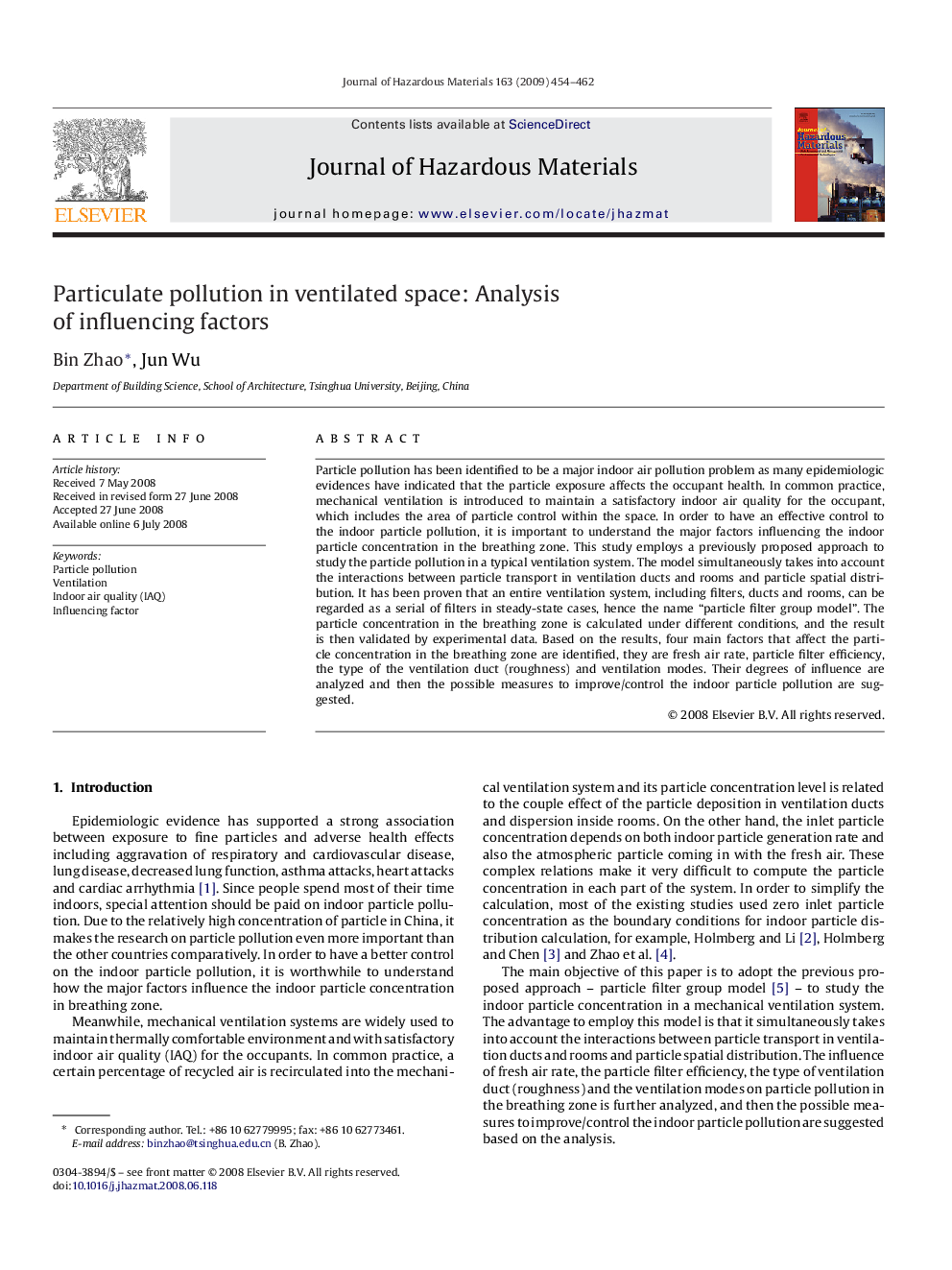| Article ID | Journal | Published Year | Pages | File Type |
|---|---|---|---|---|
| 581980 | Journal of Hazardous Materials | 2009 | 9 Pages |
Abstract
Particle pollution has been identified to be a major indoor air pollution problem as many epidemiologic evidences have indicated that the particle exposure affects the occupant health. In common practice, mechanical ventilation is introduced to maintain a satisfactory indoor air quality for the occupant, which includes the area of particle control within the space. In order to have an effective control to the indoor particle pollution, it is important to understand the major factors influencing the indoor particle concentration in the breathing zone. This study employs a previously proposed approach to study the particle pollution in a typical ventilation system. The model simultaneously takes into account the interactions between particle transport in ventilation ducts and rooms and particle spatial distribution. It has been proven that an entire ventilation system, including filters, ducts and rooms, can be regarded as a serial of filters in steady-state cases, hence the name “particle filter group model”. The particle concentration in the breathing zone is calculated under different conditions, and the result is then validated by experimental data. Based on the results, four main factors that affect the particle concentration in the breathing zone are identified, they are fresh air rate, particle filter efficiency, the type of the ventilation duct (roughness) and ventilation modes. Their degrees of influence are analyzed and then the possible measures to improve/control the indoor particle pollution are suggested.
Related Topics
Physical Sciences and Engineering
Chemical Engineering
Chemical Health and Safety
Authors
Bin Zhao, Jun Wu,
